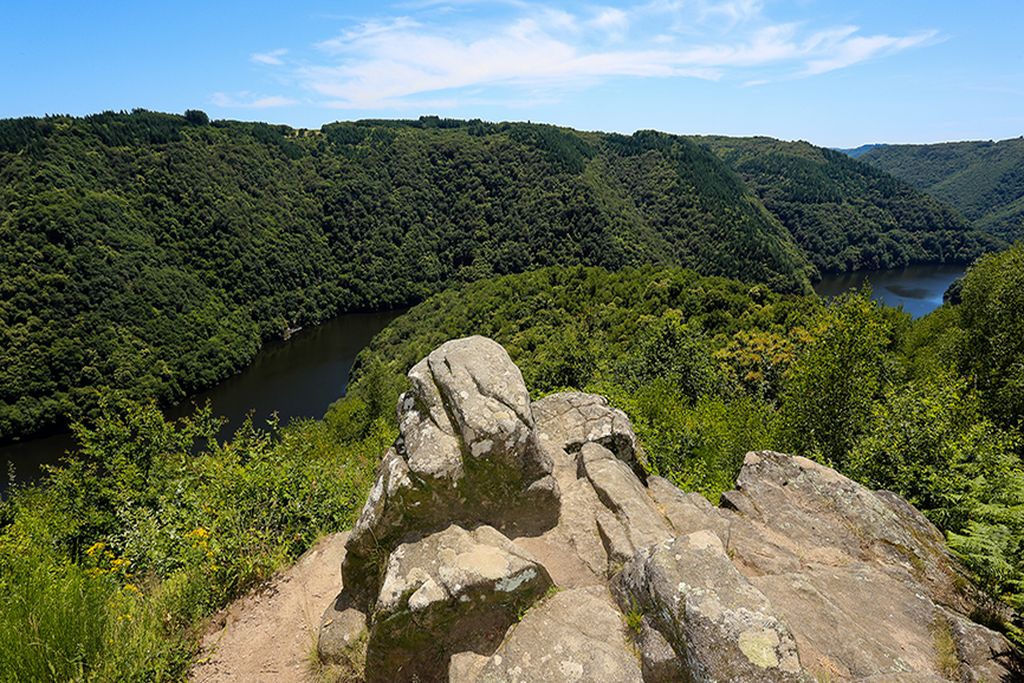
The Jardin de Bardot
6 points of interest
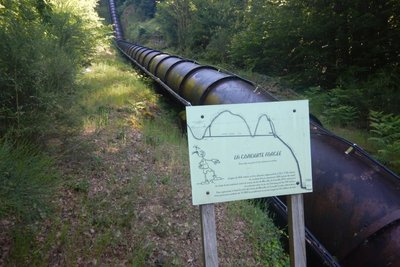
La conduite forcée - CC VEM  Site
SitePenstock
Going down towards the Jardin de Bardot, the circuit crosses the pipeline bringing water to the EDF hydroelectric power plant several times. Collected by the Marcillac la Croisille dam, the water is conveyed via a 4,7 km long underground tunnel and then by a penstock to the hydroelectric plant located in the Dordogne valley on the edge of the Chastang dam. The total drop is 234 m, giving an average annual output of 60 million kWh.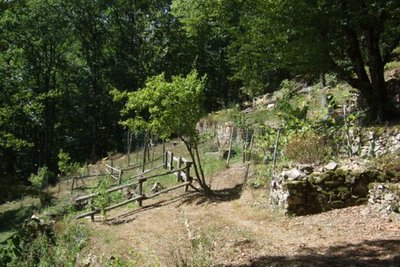
Le jardin de Bardot - D.Agnoux - CC VEM  Small patrimony
Small patrimonyLe jardin de Bardot
Around 1905, Joseph Mas (Bardot) and his wife Maria created a terraced garden in the Dordogne valley and cultivated various fruits and vegetables, some unfamiliar (peaches, strawberries, grapes, figs). Maria would then sell them in the surrounding villages. The couple's reputation extends beyond the boundaries of the commune. From the 1930s, their age and the economic situation gradually led them into poverty. Today, the terraced garden has been rebuilt for the enjoyment of hikers.
Around 1905, Joseph Mas (Bardot) and his wife Maria created a terraced garden in the Gorges de la Dordogne and cultivated various and unfamiliar fruits and vegetables (peaches, strawberries, grapes and figs). Maria would then sell them in the surrounding villages. The couple's reputation extends beyond the boundaries of their commune. From the 1930s, their age and the economic situation gradually led them into poverty. Today, the terraced garden has been rebuilt for the enjoyment of hikers.
Abri sous roche des maquis - C.Blanchon - CC VEM  History
HistoryThe Cave of the Maquis
During the Second World War, the Dordogne valley was used as a hiding place by many resistance movements (Armée Secrète, F.T.P.F., etc.). Known as the "Cave of the Maquis", this refuge is just a simple rock shelter. It was home to one of the first armed groups of the Francs Tirailleurs French Partisans, called Leopold Rechossière.
Buse en granit - CC VEM  Art
ArtGranite buzzard
A granite sculpture of a bird of prey that recalls the remarkable diversity of these gorges in the Dordogne, a breeding ground for birds of prey.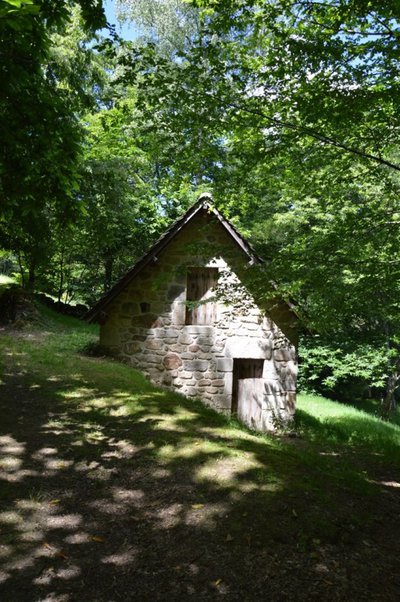
CC VEM  Small patrimony
Small patrimonyChestnut dryer
Small renovated stone building for drying chestnuts. These were placed on shelves on the floor of the first floor. A small fire, left alight for several days below, allowed the chestnuts to dry. There are many remains of dryers or kilns in this area. They testify to an important activity during the 19th century; the production and transportation of chestnuts by barge.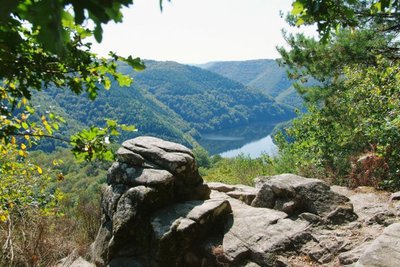
Panorama Roc du Busatier - CC VEM  Panorama
PanoramaThe Busatier Viewpoint
A remarkable view of the reservoir of the Chastang dam and the steep, wooded slopes of the Gorges de la Dordogne.
Description
From the car park, follow the road down towards the Marcillac hydroelectric plant for 300 m. It passes the foot of the surge tank for the penstock, the enclosed pipeline, which brings water from the Valletta dam.
- Follow the gravel path on the left (signed Jardin de Bardot) for 150 m, make a right-angled turn to the right, and start the descent into the wooded valley with its hornbeam, oak and chestnut trees. The trail passes over the penstock, near a water tower and continues down into the gorges.
- At the intersection, after a reservoir, continue straight ahead until you reach the junction of the paths. You can access the Dordogne riverbank by continuing straight ahead.
- Follow the path to the left, climb the steps, pass by a former chestnut dryer, a "séchadour" and enter the Jardin de Bardot (a restored site). Continue along the steep path that begins at the top and to the right of the terraced garden. It zig-zags up the steep slope. On a bend, a path leads to a cave used by the Resistance, 100 m away. At the top, continue to the left on the flat and take the path that goes back up the valley.
- Continue on the stone path, pass in front of the Pas du Diable, the Fauteuil de Dieu, and the Buse de Granit and you will find a restored "séchadour.
- Take the track on the left, pass the belvedere of Le Busatier (a panoramic viewpoint looking out over the Dordogne valley; now look up into the sky: peregrine falcons, black and red kites nest nearby) and then find the starting point again.
- Departure : The Busatier trail near Nougein, Marcillac la Croisille
- Arrival : The Busatier trail near Nougein, Marcillac la Croisille
- Towns crossed : Marcillac-la-Croisille
Forecast
Altimetric profile
Recommandations
Information desks
Carrefour de l’Epinette, 19550 Lapleau
1 rue Joseph Vialaneix, 19300 Egletons
Access and parking
Parking :
Report a problem or an error
If you have found an error on this page or if you have noticed any problems during your hike, please report them to us here:
